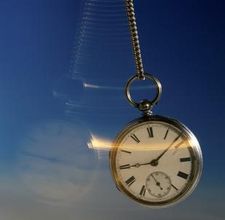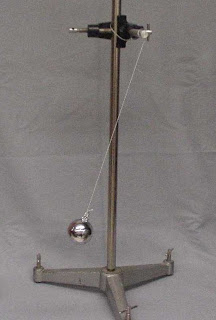Today we are going to talk about :
1- Galileo Galilei
The equations of motion explained earlier were first worked out by Galileo Galilei, who was born at Pisa in Italy in 1564.
Galileo began his university career as a medical student, but later forsook medicine for the study of mathematics and physics.
His outstanding ability earned him a lectureship by the time he was twenty five years of age, and eventually he became professor at the University of Padua.
Later in life he was imprisoned for teaching that the sun was at the center of the solar system. This, being contrary to the teaching of the Church at that time, was regarded as an attempt to undermine its authority.
In the study of mechanics, Galileo is particularly remembered for the work he did on the acceleration of falling bodies.
The Greek philosopher Aristotle (384 BC – 322 BC) taught that the speed with which a body fell to the ground depended on its mass. This wrongful assertion had been accepted for centuries, but legend has it that Galileo tested the truth of the matter by a very simple experiment.
He ascended the leaning tower of Pisa and, from the top, he simultaneously released three iron balls of different masses. They all reached the ground at the same time. It has been found the the
acceleration due to gravity for a freely falling body has an average value of about 9.81 m / s² .
The accepted symbol for the acceleration due to gravity is an italic letter “g ” to distinguish it from the symbol for grammes which is a Roman letter “g “.
It is very easy to draw a wrong conclusion from a single casual observation. A feather, for example, falls to the ground much more slowly than a stone. The fact is that air resistance as well as force of gravity govern the rate at which a body falls towards the earth.
In the case of a light feather of large surface area the air resistance is very large compared with the force of gravity on it.
If air resistance is eliminated the feather falls with the same acceleration as the stone.
This was first demonstrated by Robert Boyle (25 January 1627 – 31 December 1691) shortly after Galileo’s death. Using his newly invented air pump, Boyle removed the air from a tall glass jar containing a lead bullet and a feather.
When the jar was invented both bullet and feather reached the bottom of the jar simultaneously.
2. The simple pendulum
A story is told of Galileo, that he was once attending a service in the cathedral at Pisa when his attention was distracted by the swinging of a lamp which was suspended from the roof by a long chain.
Using the beats of his pulse as a clock, he noticed that the time of swing of the lamp remained constant even when the oscillations were dying away. The lamp was behaving as a pendulum.
In mechanics, a simple pendulum is defined as a small heavy body suspended by a light inextensible string.
Galileo was quick to realize the importance of the constant time of swing of the pendulum, and later on it occurred to him that a pendulum might be used to govern a clock more satisfactorily than the horizontal oscillating crossbars which were then in use.
Before he died in 1642, Galileo left plans for the construction of a pendulum clock, but it was not until 1657 that the first successful pendulum clock was constructed by the Dutch scientist Christian Huygens (14 April 1629 – 8 July 1695).
3. Now, with the study of the simple pendulum.Measurement of g
For experimental purpose, a simple pendulum is made by attaching a length of thread to a small brass or lead sphere called the bob.
The thread is held firmly between two small pieces of wood ( or a split cork ) held by a clamp and stand.
One complete to and fro movement of the pendulum is called an oscillation or vibration.
The time taken for one complete oscillation is called the periodic time.
The length of the pendulum is defined as the distance from the point of suspension to the center of gravity ( center of mass ) of the bob.
As the pendulum swings to and fro, the maximum displacement of the bob from its rest position is called the amplitude. Alternatively, we speak of the angular amplitude of the pendulum or the angle between the extreme and the rest positions of the string.
Provided the amplitude is small, i.e., not more than a few degrees, the periodic time depends only on the length of the pendulum and the acceleration due to gravity.
Experiments carried out using bobs of different sizes show that the periodic time does not depend on the mass or material of the bob.
Without going into details, the periodic time, T, of a simple pendulum is given by,
T = 2π√l/g
where l = length in m;
g = acceleration due to gravity in m/s² .
In order to verify this equation experimentally it will be found convenient to rearrange it so that all the constant factors are on one side only.
Squaring both sides,
T² = 4π² l/g
dividing both sides by l,
T² = 4π² / g = constant
The object of the experiment now to be desired is to verify this equation by measuring the periodic time T, for a series of different values of l.
If the equation is true, the results should show that T²/l = constant.
Timing of the oscillations is begun by counting ” naught” as the bob passes through its rest position and simultaneously a stop-clock is started. Counting is continued, “ one, two, three, etc. ” each time the bob passes through its rest position in the same direction. In this way, the time of 50 oscillations is found for at least half a dozen different lengths varying from about 0.30 to 1.0 m.
In each case the timing should be repeated as a check on the previous reading and the results tabulated as shown.
length l Time for 50 oscillations periodic time T² T²/l
Constancy of the values of T²/l entered in the last column of the table – which I could not draw 🙁 – shows that the square of the periodic time is proportional to the length of the pendulum.
This may also be demonstrated by plotting a graph of T² against l.
A straight line through the origin should be obtained.
Calculation of the acceleration due to gravity from the results
Since T²/l = 4π² / g
it follows that g = 4π² / T²/l
Hence a value for g may be calculated by dividing 4π² by the mean value of T²/l
obtained from the last column of the table. Good luck.


